Philips CD104

Executive brief:
in this article I will look under the
skirt of the small and funny CD player Philips CD104.
I will evaluate :
-
- the Laser assembly and mechanism- Philips CDM1
-
- the power supply,
-
- the DAC - Philips TDA1540, and the output stage.
I will describe my actions:
-
- PCB tuning - capacitor games
-
- decoupling of the DAC TDA1540
-
- checking possibility to remove oversampling function - the
NOS mod
-
- and adding a Lampizator output stage to remove the old OP-AMPS
-
- evaluate the possibility to use CD104 as a transport

This must be one of the most popular CD players of all times. Kind of
Volkswagen Golf so to speak. Its looks are deceiving. It looks like
todays midi players from supermarket. Nothing could be more wrong !
This is not a toy, this is a damn serious player ladies and gentlemen.
Compared side by side it is identical in every detai to a Revox 225.
Same mechanism, same chips, same schematics.
If you have one collecting dust somewhere - DONT EVER SELL IT. If you
can buy one - DO IT.
In this whole player absolutely NOTHING IS MADE OF PLASTIC. Not even
tray, buttons, or chassis.
the Laser assembly and mechanism- Philips CDM1
The strongest point of Philips CD104 is its mechanism. This is probably
the best Philips mechanism ever made, all cast metall, brushless motor,
magnetic field swingarm - everything what the doctor ordered. I like
this CDM1 more than the next CDM1 MK2, and definitely more than CDM2,
CDM4 and the latest ones like VAM1250 and so on. There is only
onemechanism in the whole world which can compete with Philips CDM1 and
that is Sony kSS190A. Okay, maybe the Philips PRO series, maybe the
sony BU1. Thats all.
These mechanism have a tendency to live forever, laser is with double
glass lenses and I never saw one die, unlike the lasers in CDM2 and
CDM1MK2.
The tray is full metall, the front moulding is all metall, this is
state of art machine. IF ONLY IT COULD SERVE AS A TRANSPORT !!! Hey
goldfish where the hell are you?
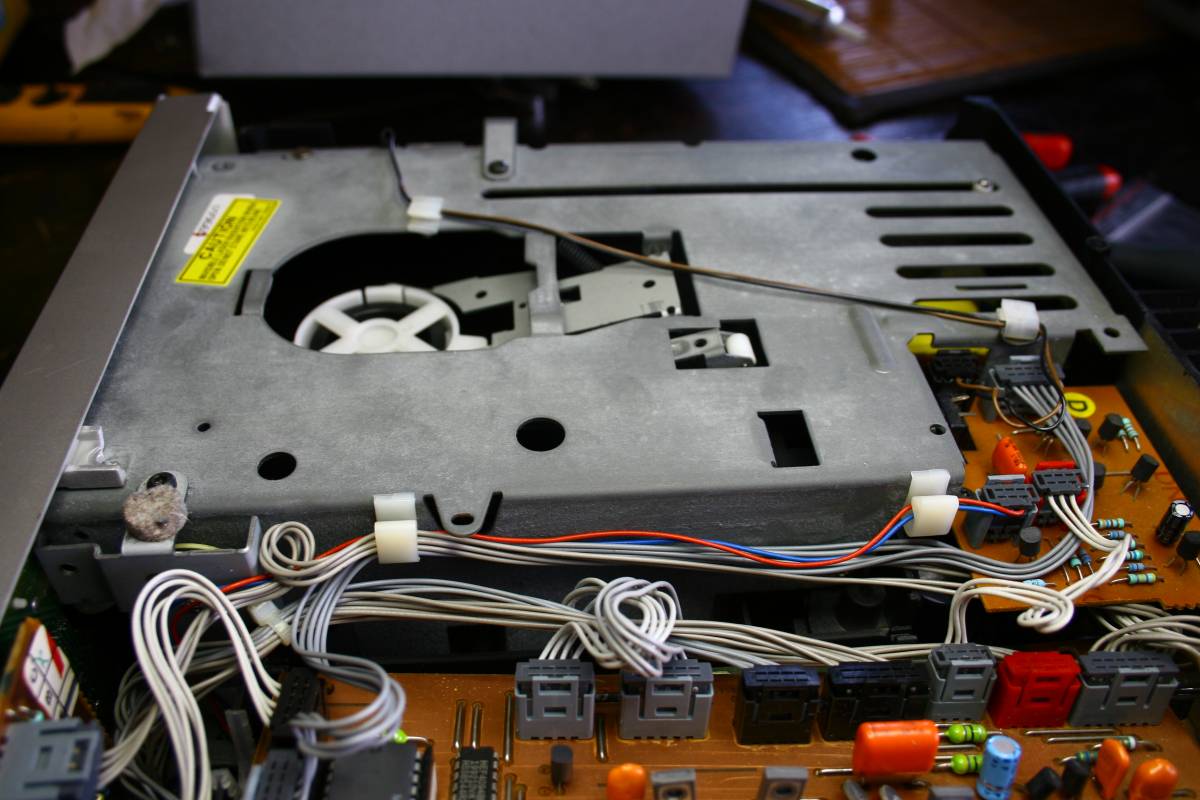
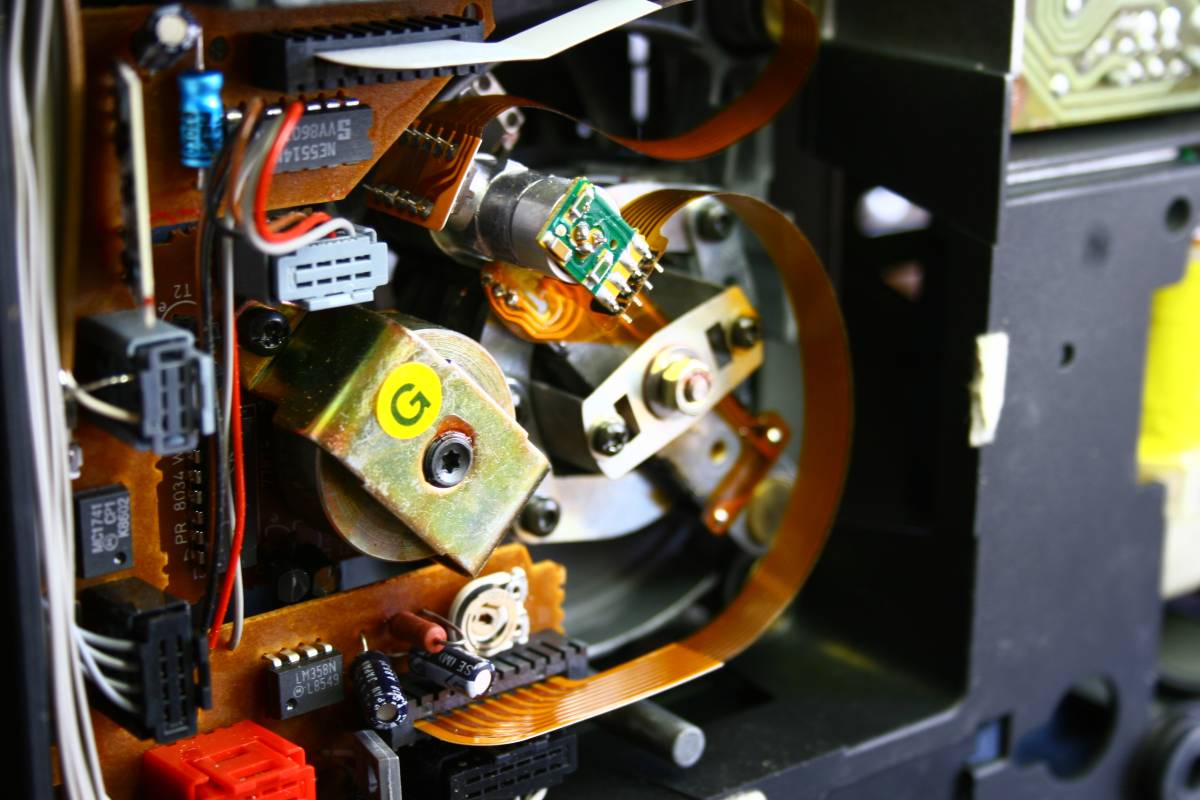
the power supply,
Despite small size the player has big power section. The regulators all
sit on the gigantic heatsing. Probably the biggest heatsink on any CD
player ever. Is it good or bad - I dunno. At least the regulators are
temp. stable and will not burn.
The down side like for all Philips older machines - and all marantzes
too - is that the regulators are sooo bloody far apart from consumers
(chips etc). The power runs for a quarter mile of cables and traces. I
like much more the sony way - relulator half inch from consumer.
For this reason these Philips designs are very sensitive to power
capacitor quality. Hence the need for oscons and blackgates.

the DAC - Philips TDA1540, and the output stage.
This is a funny DAC - the oldest dac on earth. It s debut was together
with CD format, circa 1980. I was just 16 years old then and we had
Solidarity in Poland and a year later - the martial law. Philips came
out with a DAC capable of doing 14 bit words and a disk recorded with
16 bits. We miss two precious bits - they are LOST forever. So the
quality level resembles that of a very good MP# or something like that.
Only few years later the Philips people released the next gen -
TDA1541. (1985)
Anyway, we are dealing with a grandmother of the TDA1541 - the TDA1540.
The datasheet reveals that this is almost identical chip although it is
mono. It is very interesting to read about the working principle how
the digits are translated into electrical signal - MUSIC. It is easier
now to understand the role of the famous 14 decoupling caps.
TDA 1540 differs from the TDA1541 also because it is MONO. One needed
per channel.
There are three power supplies : plus 5, minus 5 and minus 17 V. For
both channels - 6 are needed. Each needs a good cap like os-con.
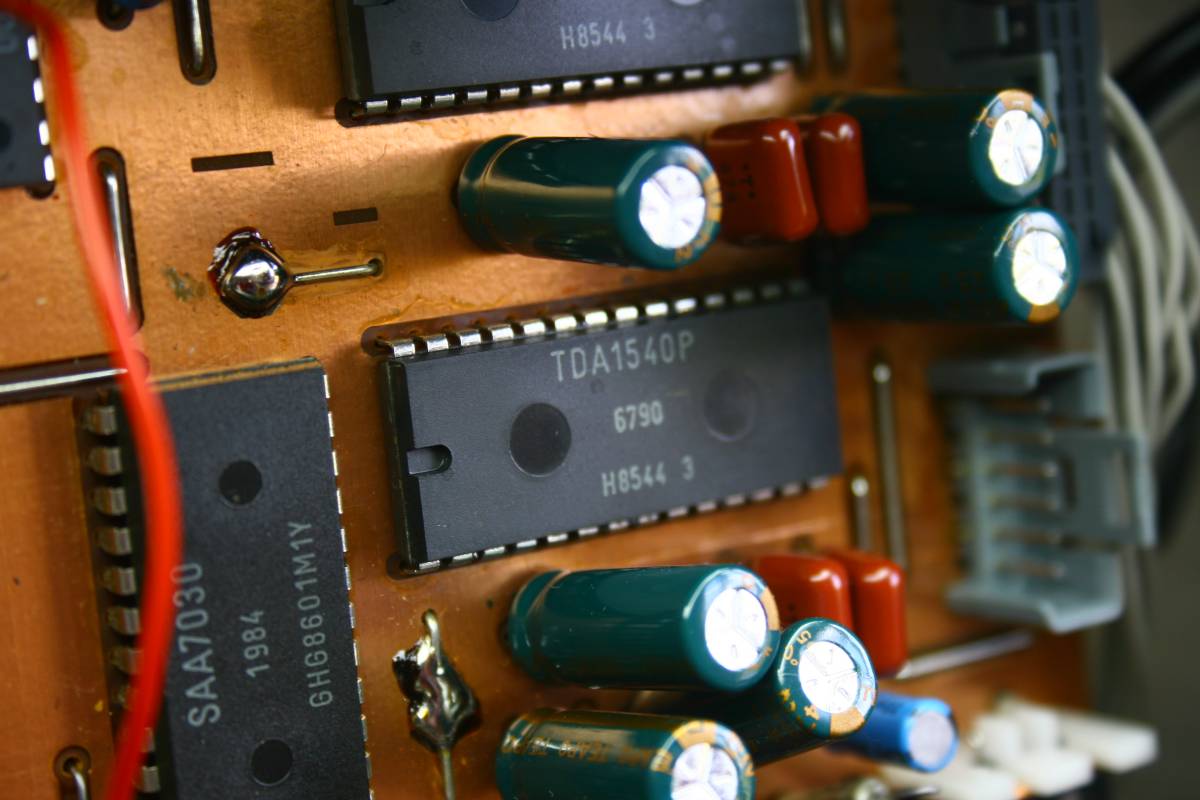
PCB tuning - capacitor games
As you see we need 6 caps for powering of TDA1540 - one for pin 4, one
for pin 7 and one for pin 10. Observe polarity which is Plus5, minus5
and minus 17 respectively. I also added capacitors to decoupling
, at least 3 for
decoupling pins of each channel, two most significant byte pins already
have bigger and better non-smd caps, so I added new caps to three next
ones. All that is not counting the
power to other chips on this board.
For decoupling I used additional 220nF MKP per the legs
having the SMD because the critical MSB (most significant bytes)
legs already have a proper MKP
caps not smd.

decoupling of the DAC TDA1540
checking possibility to remove oversampling function - the NOS mod
I repeated the well tried and proven scenario - to remove the saa7030
chip and solder 4 bridges.
Recommendation
courtesy of Frank Willem de Haan
from the Netherlands whom I thank
- remove TDA7030
completely
- in place of
TDA7030 connect four wire bridges:
pin 20 - pin 3
pin 17 - pin 10
pin 18 - pin 6
pin 21 - pin 7
- de-solder only pin 16 on SAA7000
with a solder wick and make
sure pin 16 "floats", it does not make any contact the circuit board.
(or simply cut the trace)
- solder a 1K
resistor on top of SAA7000, between pin 16 and pin 18
(to put SAA7000 in 14 bit mode, because TDA1540 needs 14 bit)
Listen to your
CD104 the way the Philips engineers designed the CD
player, before they were forced into messing up the sound with
oversampling because of the "16 bit race".
Non destructive,
if you want to revert; remove 4 wires, solder TDA7030
back in place, remove resistor and re-solder SAA7000 pin 16.
Sound improvement is VERY GOOD INDEED. I repeated this on Revox 225 and
it was fantastic as well. Worked the first time.
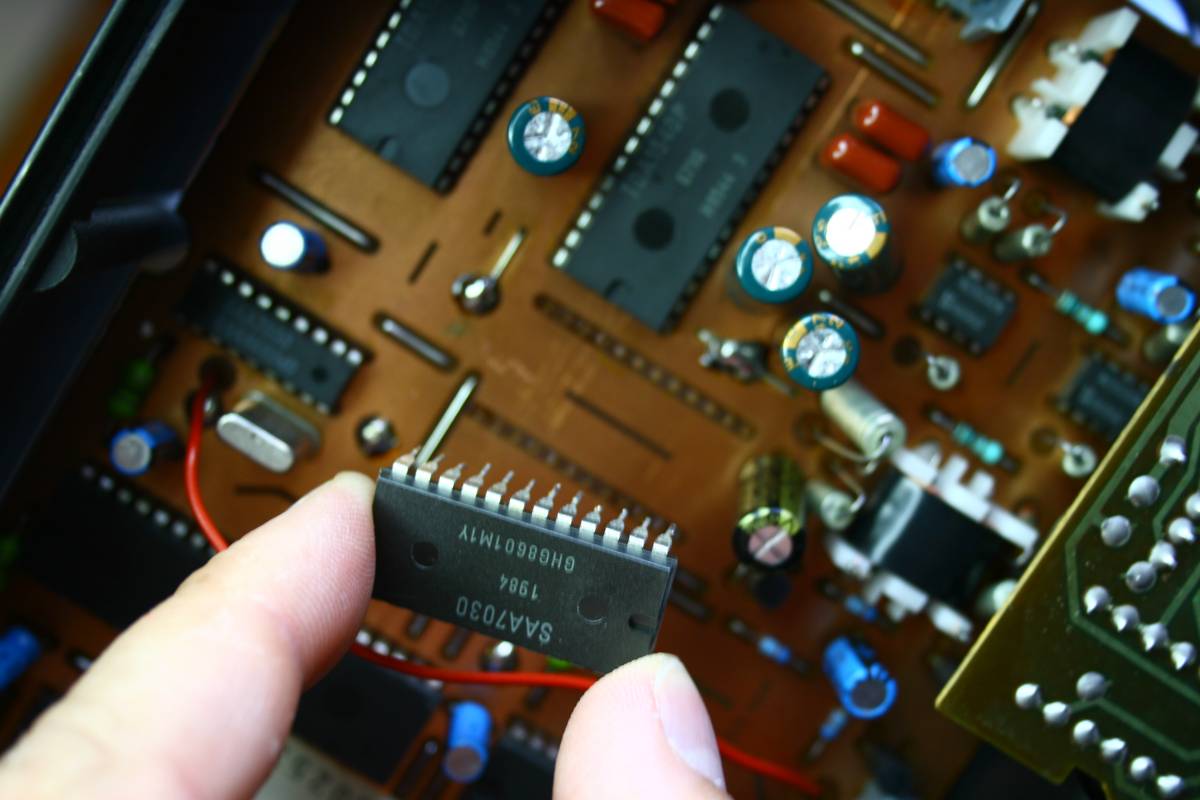
SAA7030 is on the way to the dustbin.
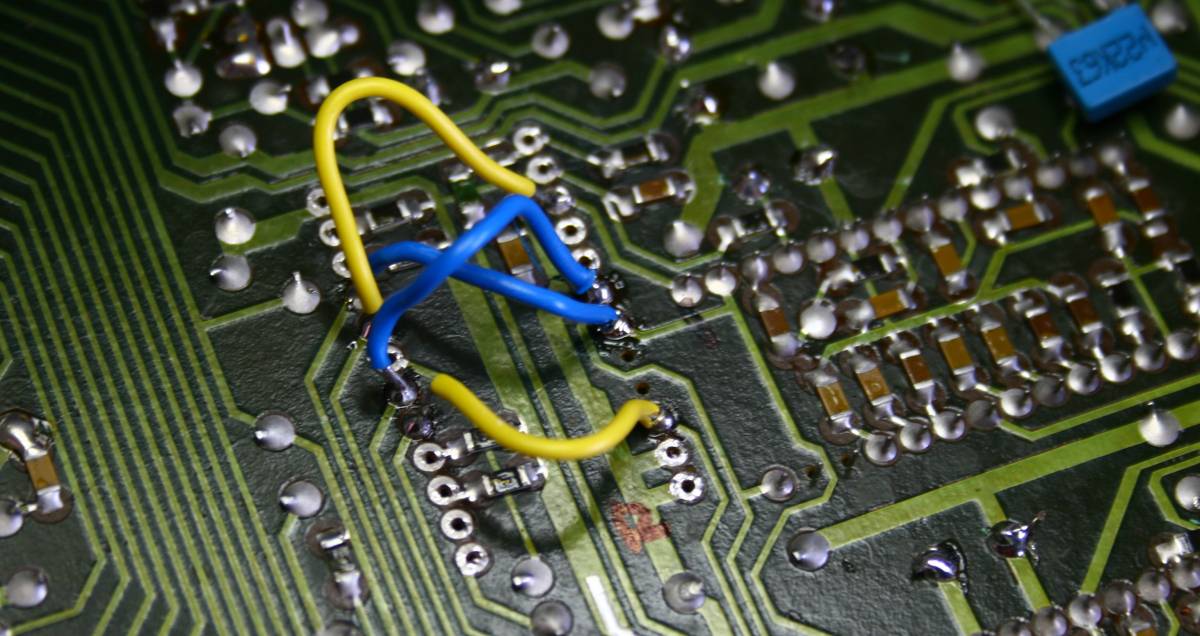
Signal bridges already installed in place of SAA7030. In fact a better
way would be to trace the signal and connect the preceeding pins of the
preceeding chip and bridge these points to TDA1540 directly. Just a
shortcut bridge.

This is the 1K resistor bringing the Pin 16th of saa7000 to be at 5V
(leg 18 potential) to read correctly 14 bit words.

General view. Lots of goodies in tight space.
adding a Lampizator output stage to remove the old OP-AMPS
Lampizator for the 14 bit old player ? Crazy ?
Sounds crazy but when I heard the CD104 with just NOS and all capacitor
mods - it was so good that I did not believe my ears. It is too good to
be true.
You could stop here and just replace opamps with the Burr Brown OPA2604
or something equally good. But why stop - why no lampizator?
The superb mechanism and NOS mode compensate for the lost 2 bits of
resolution. This player reaches very high. Almost to the level of its
much younger cousin - Philips
CD751 and 753.
This player well deserves being treated seriously and getting proper
lampizator. The big question is WHERE ?!?!?!
(read more about the DAC
chip - the big TDA1541A - HERE)
The
TDA1540 is here:
evaluate the possibility to use CD104 as a transport
This will follow in September........
Link to all relevant datasheet:
http://www.arky.ru/audio/sprav/datasheets/saa7000.pdf
and general
datasheet bank:










